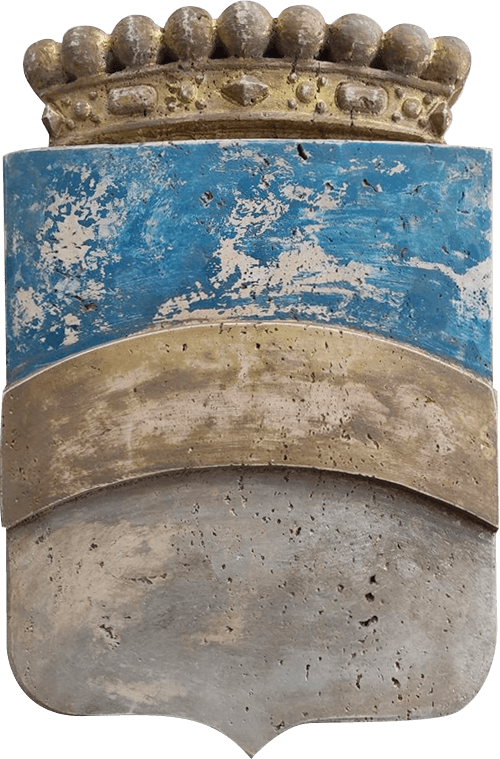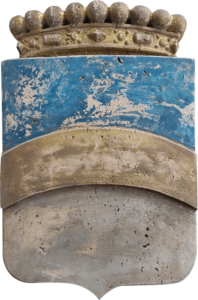The history of the Tirelli family
The Tirelli family, vassals of various imperial dynasties over the centuries, but mainly linked by a strong bond of loyalty to the Farnese princes and the Royal House of Aragon and even earlier to the Angevin Crown, spread their field of action in various regions of Italy, where he received fiefdoms in Emilia Romagna, Lombardy, in the Verona area, in Campania and Friuli V.G., as well as in Calabria.
To his descendants the noble register recognizes the title of patricians, marquises of Guastalla and counts of Casole Bruzio, very few descendants have survived, in particular in Parma and Naples.
This family already known in the fourteenth century, was awarded the patriciate by Queen Giovanna II of Anjou Durazzo. Its members held many prestigious offices over time. According to tradition, the Tirellis (first known as Casoles) come from Britain, it was a certain Tirello Casole who under the d’Angiòs, abandoning the surname Casole, definitively transformed his first name into Tirelli. Fra’ Gerolamo Sanbiasi mentions it in one of his writings in 1364. Casole became the name of the feud, located where the municipality of Casole Bruzio stands today, in the Cosentino area.
The Tirellis also became a well-established lineage in Friuli V.G, starting from the first half of the 1600s, where they acquired fiefdoms, following the provision of various military services, such as mercenaries, in favor of the Central European dynasties. We find them already in this era designated feudal lords of the ancient rural municipality of Mortegliano / UD.
In northern Italy, during the Renaissance, the other prestigious branch of the Tirelli family consolidated at the same time, building their fortunes and wealth in Desenzano, on Lake Garda. In the 16th century the Tirellis, who were already part of the Lombard patriciate, at the end of the same century passed, with Giambattista, into the service of Ferrante II Duke of Guastalla and a century later, with Giulio born in 1643, they were created Marquises by Francesco Farnese duke of Parma and Piacenza. The Tirellis held important positions in the military, political and ecclesiastical fields (a Francesco, monsignor in 1746 was abbot rector of the cathedral in Guastalla). The noble branch moved definitively from Guastalla to Parma in 1800.
The Neapolitan branch and the Emilian/Lombard one always remained deeply linked and interconnected, due to the deep loyalty towards the Farnese family, with which they were related.

The Tirelli family draws its origins from Desenzano di Brescia where in the sixteenth century it was among the Noble Families of the city. At the end of the century, D. Ferrante II, Duke of Guastalla invited Giambattista Tirelli to his residence with promises of citizenship and privileges. A century later, on 27 January 1696, Giulio Tirelli and his legitimate descendants were created marquises by Francesco Farnese, Duke of Parma Piacenza and Castro for services rendered to the Court and to the public good. In the year 1800 Francesco Tirelli, on the occasion of his marriage to the Marquise Barbara Malaspina di Olivola, moved to Parma, where in 1816 he held the position of Chamberlain of the Court of Maria Luigia Duchess of Parma and in 1825 he became honorary Councilor of State, while his wife was a lady of the court. In 2015, of this family, only the Marquis Angelo, his daughter and his niece Francesca, daughter of the Marquis Alessandro who died in 2006, are alive. Alessandro is one of the most recurring names in the Tirelli family, the other survivor is Alexandro Maria Tirelli, son of Michele, Count of Casole, part of the original and oldest branch.
As far as the oldest branch is concerned, the Tirelli family, formerly Casole, is in fact registered in the Napolitano Regional List and also registered in the golden register of the Italian Nobility and is entitled to the title of noble patrician of Cosenza (m.) to males descended by male line from the knight Orazio Maria Tirelli; as well as the title of Count of Casole and Marquis of Villanueva del Fresno (this title is still formally recognized today by the Kingdom of Spain). The title of noble (pers.) belongs to females of the same lineage.
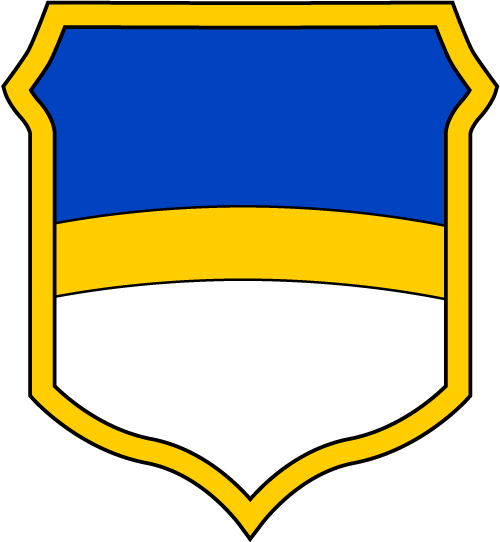
Lorenzo Tirello Casole in 1647 was company captain and royal admiral.
Ludovico, brother of the aforementioned Lorenzo, was canon of the cathedral of Cosenza and appointed archbishop.
Bernardino, brother of the aforementioned Lorenzo married the noblewoman Dianora Arnone with whom they gave birth to Orazio, the latter married to a woman belonging to the noble Amantea family, they had: Antonio (single), Francesco (canon of the cathedral of Cosenza) and Carmine (died in 1762) who was advocate for the poor in the Royal Audience and subsequently appointed by King Charles of Bourbon auditor of the court and tax advocate; he married a woman belonging to the noble Bombini family and their son was Orazio.
Tirello son of the aforementioned Filippo, was married to a woman of the noble family of Carolei, he used the name Tirello as his first surname.
Bernardino, in 1524 made his niece Laura marry Alfonso Russo.
Tescio, son of Bernardino, married Bernardina di Donato.
Angelo distinguished himself for his military exploits and was a colonel of the city of Lucca.
Nicolò was mayor of the nobles of Cosenza in 1473.
Aloise Casole in 1498 was deputy to the Spanish tax collection and created Marquis of Villanueva del Fresno, a title that is transmitted to this day.
former captain of the Guides and horseman, captain of Garibaldi's Mille.
When Garibaldi was allowed to lead the Expedition, the condition placed on Count Giovanni Battista was that Garibaldi’s volunteers were not soldiers of the Bourbon Royal Army, therefore Garibaldi could not recruit nobles linked to the European reigning houses merged into the 46th regiment from Garibaldi’s former fellow soldier Colonel Sacchi, nor from the 45th regiment as he would have wished, with the exception of five officers who joined the Thousand, including the no longer young noble Giovanni Battista Tirelli.
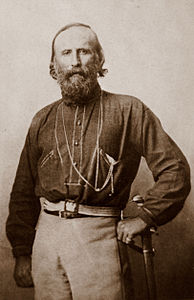
The number of the “Thousand”:
The definitive list was published in the Official Gazette of the Kingdom of Italy on 12 November 1878, revision of the previous list of the Thousand of Marsala, by Giuseppe Garibaldi published by the Ministry of War in bulletin n. 21 (Year 1864), to grant the relative “war” pensions to the volunteers, entitled under the law of 22 January 1865, n.2119[2],[3].
On the basis of the available documentation, historians have estimated the number of volunteers who left Genoa on 5 May 1860 at about 1,150, of whom 1,089 would have landed in Marsala, as around sixty had been destined for the diversion of the Zambianchi, some had left the expedition for political conflicts and 4 or 5 had gathered in Porto Santo Stefano hiding in the holds. In Porto Santo Stefano many soldiers who wanted to join the expedition were rejected.
It makes me a certain impression that one of my direct ascendants participated, not yet young, in a war enterprise that was of primary importance in the construction of today's Italian state. At home I keep the saber of King Carlo Alberto of Savoy, later given by Vittorio Emanuele to our family at a time when Turin was trying to win the sympathy of the non-Savoy Italian nobility. The history of Italy has been troubled and difficult, we need to think about the enhancement of national unity, the overcoming of the southern question and the placement of Italy among the important forces of the Mediterranean and Europe.
The Breton origins of the Tirelli family deserve a very interesting historical study:
The first to arrive on Italian territory, a certain Tirello, who placed himself in the service of Queen Giovanna D’Angio Durazzo, transliterated his name from the Germanic Franco Tirel or Tyrel into Tirello precisely, then transformed into Tirelli, in the plural, identifying surname of the family group; in an era, precisely the medieval one, where the phenomenon of the appearance of surnames was taking hold, only among noble families.
The first important and known progenitor of Tirello was Gautier Tirel or Tyrell (in English: Walter Tirel ) († between 1100 and 1130 inclusive), lord of Poix ( Picardy ): he was a Frankish and Anglo-Norman aristocrat and courtier. He made history by being suspected of being the accidental murderer of King William Rufus of England.
Gaultier II He is the son of Gautier I st Tirel, lord of Poix and Lord Langham. He is lord of Poix and lord of Pontoise in the strategic French Vexin, which acts as a buffer between the rule of the Duke of Normandy and that of the King of France. He is a vassal of the Count of Pontoise and of Amiens. He married Adelise, daughter of Richard de Bienfaite, of the very powerful family of Clare.
Gautier is a friend and knows Guillaume le Roux. On Thursday 2 August 1100, he was taking part in a deer hunting party in the New Forest (shire of Hampshire in England) with the king and other companions when, late in the afternoon, Guillaume le Roux was killed by a stray arrow, who is said to have been fired by Tirel.
Certainly he fled the scene immediately, fearing he would be hacked to pieces, the rumor that he was the killer was swelling. Some historians have seen here the indication of the existence of a plot that would have been fomented by Clare and Henri, the king’s brother. Margaret Murray, a British anthropologist, even considered witchcraft and ritual sacrifice to be the cause of William le Roux’s death.
It is true that Henri is present at this hunting party. He took the opportunity to seize the throne, and was hastily crowned in Westminster Abbey two days later. The circumstances are favorable to him, but probably fortuitous. It has been argued that Henri was in despair and that this was his last chance to seize the throne, as his older brother Robert Courteheuse had gone on the First Crusade since 1096 and the two older brothers had named themselves heirs. ”
One of the others in 1091, during the Treaty of Caen. Indeed, the terms of this treaty had long since been violated and the treaty repudiated by the Courteheuse at Christmas 1093. Indeed, the timing of his brother’s death was not particularly advantageous. Had the death occurred within the previous four years, Henry would have had ample time to consolidate his power and administration in England, and then annex Normandy. Instead, he immediately faces opposition from the barons in his realm and an invasion from Courteheuse who has returned from crusade.
Guillaume le Roux is not the first to die in the New Forest. As early as about 1070, his elder brother Richard had died in this forest, and the previous May, his nephew Richard, bastard of Courteheuse, had suffered an eerily similar death there.

Gautier takes refuge in one of his fortresses in France, fearing reprisals. Gautier takes refuge in one of his fortresses in France, fearing reprisals. Suger reports that Tirel often swore under oath that at the time of the king's death he was not in the same area of the forest as the king.
As the abbot points out, Tirel was safe in France when he took these oaths, free from all retaliation and all hope, and had no reason to assassinate the king.
Gautier Tirel suffers no punishment and does not benefit from this incident. There was no investigation, as it was obvious to all his contemporaries that this was an accident and not a deliberate act. This is why his small English possession is not seized.
Guillaume le Roux was a ruler with a reputation for being anticlerical and his death was interpreted by the chroniclers of the Middle Ages as a divine retribution to punish an evil and ferocious king. But killing a king, even accidentally, is a very hard thing to bear.
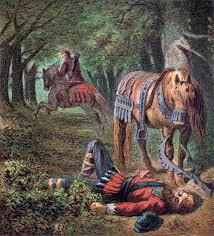
Gautier Tirel is the founder of the abbey of Saint-Pierre de Sélincourt and of the priory of Saint-Denis de Poix. He probably died before 1130, when his wife was recorded as having Langham. His land in Pitch and England passed to his son and heir Hugues. This sells Langham to Henri de Cornhill to go on the Second Crusade in 1147. Orderic Vital mentions that Gautier Tirel made the pilgrimage to Jerusalem and died there much later.
Less known is his father, the first Tirelli who went down in the chronicles of history, Gautier Tirel first was lord of Poix and Bussy-lès-Poix , Croixrault , Équennes , Famechon , Frémontiers and Moyencourt . He was a vassal of the Count of Amiens, established on the edge of his county. Before 1066, Tirel established links with the Duchy of Normandy. In 1040 he built the fortress of Famechon and the castles of Poix and Moyencourt.
His name (Walter Tirel) is engraved in the list of William the Conqueror’s companions in the church of Dives-sur-Mer (founded in the eighteenth century), but there is no evidence that he participated in the famous battle of Hastings.
He married Alix de Frémontiers, born around 1030, with whom he had two children:
Gautier II Tirel, a very close friend of the second Norman king of England, Guillaume le Roux, and his alleged assassin, on August 2, 1100;
Osmont Tirel, Lord of Frémontiers, husband of Havoise de Conty
The English descendants transformed and consolidated their surname into Tyrrell, the Italian ones into Tirelli.
